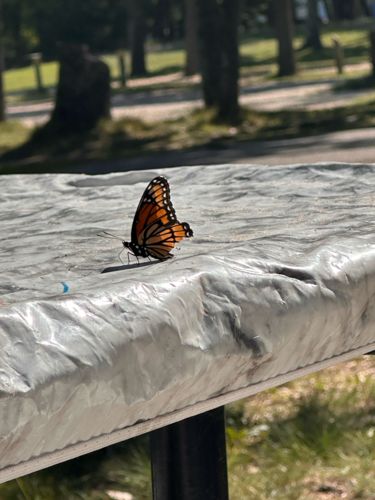Monarch butterfly
Scientific Name: Danaus plexippus
Order & Family: Order: Lepidoptera, Family: Nymphalidae
Size: Wingspan: 8.9–10.2 cm (3.5–4.0 inches)

Natural Habitat
Monarch butterflies can be found in a wide range of habitats including open fields, meadows, prairies, roadsides, gardens, and agricultural areas where milkweed is present. During their migration, they can be seen in various environments along their migratory paths.
Diet & Feeding
Adult monarch butterflies primarily feed on nectar from a variety of flowering plants. Monarch caterpillars feed exclusively on milkweed plants (Asclepias species).
Behavior Patterns
Monarch butterflies are known for their spectacular annual migration. Eastern North American monarchs migrate thousands of miles south to overwinter in Mexico, while western monarchs overwinter in California. They exhibit distinct life stages: egg, larva (caterpillar), pupa (chrysalis), and adult butterfly. The caterpillars feed exclusively on milkweed, accumulating toxins that make them unpalatable to predators.
Risks & Benefits
Monarch butterflies are important pollinators, contributing to the reproduction of many flowering plants. They serve as an indicator species for environmental health. The primary risk to monarch populations is habitat loss (especially milkweed for larvae and overwintering sites for adults) and pesticide use. They pose no direct risks to humans.
Identified on: 8/16/2025